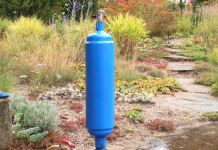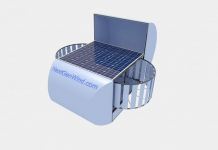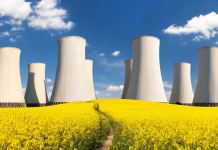Pellets — a biofuel produced from waste furniture and agricultural industries and peat. This specific size granules into a cylindrical shape. For the first time they began to produce in 1947.
This type of biofuel fabricated peat, waste wood (wood chips, low-quality wood, sawdust, bark, etc.), and also raw materials may be waste from agriculture (chicken manure, sunflower husks, straw, etc.).
Pellets conventionally divided into white and black.
Producing biofuel called white pellets using a pellet press. However, before entering the granulator, feedstock should first be milled to flour state. Тhereafter, the resulting mass must be dried in a drier and then granulated. The granulator mass is pressed and this temperature increase occurs. Then, a substance that is in the timber under the influence of the temperature is easy to form granules. Then cool down and the resulting granules are packed in various packaging by weight. This may be for domestic use packages weighing between 2 and 20 kg, and packaging for commercial use up to 1 tonne, but there is still the option of selling mounds.
Black pellets produced by firing the lack of oxygen. Temperature conditions during the manufacture of the pellets ranges from 200º to 330º. They have the advantages compared with white pellets, namely:
— тhey are practically burning coal indicators index, which is significantly higher than that of the white pellets;
— during storage are not prone to spillage;
— not afraid of moisture, ie, not rot, moldy and swelling. Because of this, they are stored in the open air quietly and do not require special storage facilities.
The quality of the pellets, as a rule depends on what materials and what the production technology applied. If the raw bark is present in a small percentage, on the pellets will be bright. During the drying process the granules may darken slightly, but this does not affect the quality. In a number of developed countries adopted the standard compliance of this kind Biofuel where clear indicators are normalized length and shape, moisture and dust content.
Biofuels as granules today widely used in the home and industry. In everyday life for heating houses typically use pellets light varieties. They are packed in packs of 15 — 20 kg. Due to the fact that world prices for traditional energy sources are rising steadily, growing in direct proportion to the demand for pellets. In several European mill by means of burning pellets is heated up to 2/3 of the housing stock. But black grade pellets intended for industrial use. With their help, heated already entire districts, as well as to produce electricity. At the enterprises of burning pellets also provides heat for heating and energy for various production cycles.
It is also very untypical for biofuels light varieties have been used. Given its ability to swell in contact with a well to moisture, it began to be used as cat litter.
The pellets are very environmentally friendly. CO2 emissions from the combustion of biofuels is equal to the amount that is absorbed during the growth of trees, shrubs and various plants. And the use of advanced combustion technologies to minimize emissions of NO2.























